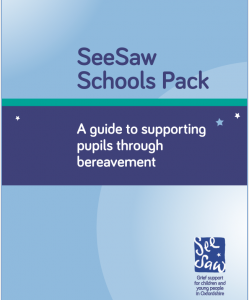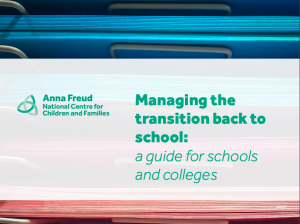Supporting children transitioning back to school
Autumn sees the start of a new school year and it can be a difficult time for many reasons. After a long time out of school, for most children, it may take a lot of adjustment for many to settle back into the routine. For some it will be a relief, a chance to catch up with friends, teachers and to resume their studies; lots of children enjoy the structure of the school day as it can help them to feel safe and contained. For others starting back at school may be more of a challenge; and bereaved families often tell us that starting the school year can be hard. Whether their bereavement is new, or happened some time ago, going back to school may need some thought and planning.
Here are a few ideas that may help:
- Don’t leave it until the night before school starts to talk to your child about how they are feeling about going back. Start conversations in advance about what they are looking forward to about school resuming, and what they might be worrying about. Make sure they know you have heard them and taken their feelings seriously.
- Help them to make a list of what they are looking forward to and what they are concerned about. It is important to list both to remind them that there are good things about going back to school and to prevent their thoughts focusing only on the negative.
- Help them to problem solve. Take each worry on their list and ask them what would help. Many bereaved children are worried about how to tell people about their bereavement or who should and shouldn’t know. Some are concerned that they might be overwhelmed by their feelings and some want everything to be the same as usual with no acknowledgement.
- Contact the school before term starts to let them know about your bereavement and what you and your child have identified as helpful things the school can do.
- Prepare a ‘script’ with your child on what information they are comfortable to share so they have the words worked out in advance and won’t feel put on the spot.
You may find our schools pack helpful. It is intended for schools on how they can support bereaved pupils, but families often find it useful too. Click on the image to download.
Things to look out for
Your child may feel they will cope with school well and they are looking forward to going back; however, it is useful to look out for behaviours that may mean they are finding the adjustment difficult.
Sleep patterns
They may be exhausted all the time and want to sleep. Grief is tiring, as is change. You may notice your child wanting more sleep than usual or struggling to get to sleep.
Angry outbursts
Fear and anxiety, and grief, can all affect mood and in children it can be expressed as anger. If you notice your child is angrier than usual or getting into conflicts at home or school more regularly it could indicate they are not coping with the change.
Separation anxiety
Many children worry about leaving their parent after a bereavement. They can become worried that other people they care about may die in their absence. After a long period of time at home they may be reluctant to leave you. If this is your child’s concern then acknowledge you understand their fear and discuss what would help them to feel reassured. Please take a look at our blog on Separation anxiety for more advice on how to support.
What children can do to support themselves
Make a self–care box
We often suggest self-care boxes to help manage anxiety but you could make a box that focuses specifically on the back to school transition. For some ideas on how to make a self-care box look at our guides on our creative resources page
Establish helpful routines
Bereaved children often find security in knowing what will happen at certain times of the day. As well as the structure of the school day, your child may find it comforting to have an afterschool/evening routine. For more suggestions on routines, please take a look at our blogpost
Create a safe space
A safe space could be a ‘happy place’ in your child’s head that they can call to mind when feeling anxious or afraid, the more detail the better to help them to visualise it. Or it could be a physical safe space with cushions, curtains, pop up tents, their favourite toys, music, or anything else they find soothing. Like self-care boxes it should be specific to your child so it can help them to manage when they are feeling overwhelmed.



